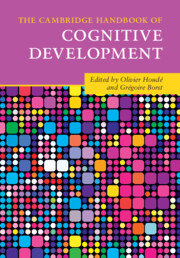Book contents
- The Cambridge Handbook of Cognitive Development
- The Cambridge Handbook of Cognitive Development
- Copyright page
- Contents
- Figures
- Tables
- Contributors
- Introduction
- Part I Neurobiological Constraints and Laws of Cognitive Development
- 1 How Life Regulation and Feelings Motivate the Cultural Mind
- 2 Epigenesis, Synapse Selection, Cultural Imprints, and Human Brain Development
- 3 Mapping the Human Brain from the Prenatal Period to Infancy Using 3D Magnetic Resonance Imaging
- 4 Development and Maturation of the Human Brain, from Infancy to Adolescence
- 5 Genetic and Experiential Factors in Brain Development
- 6 The Brain Basis Underlying the Transition from Adolescence to Adulthood
- Part II Fundamentals of Cognitive Development from Infancy to Adolescence and Young Adulthood
- Part III Education and School-Learning Domains
- Index
- Plate Section (PDF Only)
- References
5 - Genetic and Experiential Factors in Brain Development
The Examples of Executive Attention and Self-regulation
from Part I - Neurobiological Constraints and Laws of Cognitive Development
Published online by Cambridge University Press: 24 February 2022
- The Cambridge Handbook of Cognitive Development
- The Cambridge Handbook of Cognitive Development
- Copyright page
- Contents
- Figures
- Tables
- Contributors
- Introduction
- Part I Neurobiological Constraints and Laws of Cognitive Development
- 1 How Life Regulation and Feelings Motivate the Cultural Mind
- 2 Epigenesis, Synapse Selection, Cultural Imprints, and Human Brain Development
- 3 Mapping the Human Brain from the Prenatal Period to Infancy Using 3D Magnetic Resonance Imaging
- 4 Development and Maturation of the Human Brain, from Infancy to Adolescence
- 5 Genetic and Experiential Factors in Brain Development
- 6 The Brain Basis Underlying the Transition from Adolescence to Adulthood
- Part II Fundamentals of Cognitive Development from Infancy to Adolescence and Young Adulthood
- Part III Education and School-Learning Domains
- Index
- Plate Section (PDF Only)
- References
Summary
Executive attention is a brain network that includes the anterior cingulate cortex (ACC), the anterior insula and adjacent areas of the mid-prefrontal cortex and underlying striatum. In adult studies it is often activated by requiring a person to withhold a dominant response in order to perform a subdominant response (Posner & Rothbart, 2007a, 2007b). The ability to control our thoughts, feelings, and behavior develops over time and is called self-regulation. The self-regulatory view fits well with evidence of brain activation, functional and structural connectivity, and individual differences. Moreover, the self-regulatory view helps us understand how brain networks relate to important real-life functions and provides a perspective on how the shift takes place between infancy, where regulation is chiefly under the control of the caregiver, and later life, where self-control is increasingly important.
- Type
- Chapter
- Information
- The Cambridge Handbook of Cognitive Development , pp. 105 - 121Publisher: Cambridge University PressPrint publication year: 2022
References
- 2
- Cited by



